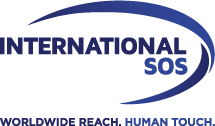International SOS Healthmap 2012 highlights complexity of medical risks worldwide
London
International SOS announces the launch of its HealthMap 2012, now in its third year, designed to help companies better understand the medical risks in the markets where they operate and identify needs to put practices in place to ensure business continuity.
A variable medical risk in the BRICS countries
The newly introduced category, 'variable' risk, applies to countries where the level of medical risk in the major cities is low or moderate, but in other areas is high. It should be highlighted that this level was applied to all the BRICS countries, an area where an increasing number of businesses are operating, and one that companies cannot afford to ignore in the current economic climate. Other countries in this category are Argentina, Azerbaijan, Chile, Indonesia, Kazakhstan, Peru, Philippines, Thailand and Vietnam.
In these countries the health risk is also determined by the availability or accessibility of adequate medical care. This is increasingly important to consider because with the ageing business population comes an increased individual health risk regarding pre-existing medical conditions such as cardiovascular disease.
China is an example showing the complexity of managing medical care in a BRIC country. Pre-hospital care is a new and emerging concept in China and primary transportation to an adequate hospital may not be readily available. The concept of disease and approach to treatment differs from Western countries and accessing care may be even more difficult because of the language barriers, the lack of medical specialisation and very busy medical structures. As clients continue to move operations to China, International SOS recently opened a new clinic for international medical care in Tianjin, its fifth clinic in China offering high quality medical support for travellers, expatriates and their families.
A difference between perception and reality of risks
The HealthMap 2012 is a great way of closing the gap between the perception and reality of health risks, which happens at both company and individual level.
For example, although a recent survey amongst 196 expatriates* revealed that individuals ranked infectious diseases, security problems and natural disasters as the biggest risks they faced. The reality, however, gives quite a different picture. An International SOS statistic of the leading causes of Air Ambulance evacuations out of Africa has determined that accidents and cardiovascular diseases, followed by infectious diseases and psychological problems, are the most common diagnoses. This is supported by data from the World Health Organisation. For a business to ensure it is prepared for operations in new areas, it must ensure that it correctly and fully understands the health risks that employees may face.
The necessity and benefits of prevention
The HealthMap 2012 provides companies operating internationally with an image representation of a global country-specific health risk rating. It enables decision makers to immediately recognise which destinations require adequate preventive risk assessment procedures and preparation programs to mitigate risks and protect companies' assets to ensure they provide adequate Duty of Care and to avoid litigation.
Dr Doug Quarry, Medical Director at International SOS, "While companies may see having the right health risk practises in place as a cost, they should also consider the rewards of doing so. There is a strong cost benefit for assuring that preventative risk management strategies are in place. It is also a valid argument from a business continuity point of view. Having the right risk assessment and preventative measures in place is not only the right thing to do; it also makes good business sense."
A research project presented by the ISSA (International Social Security Association) last year highlighted the economic benefits of investment in safety and health for companies: It may be as strong as 1:2.2.
###
Notes to Editors
About the International SOS Group of Companies The International SOS Group of Companies is in the business of saving lives, protecting your global workforce from health and security threats. Wherever you are, we deliver customised health, security risk management and wellbeing solutions to fuel your growth and productivity. In the event of extreme weather, an epidemic or a security incident, we provide an immediate response providing peace of mind. Our innovative technology and medical and security expertise focus on prevention, offering real-time, actionable insights and on-the-ground quality delivery. We help protect your people, your organisation's reputation, as well as support your compliance reporting needs. By partnering with us, organisations can fulfil their Duty of Care responsibilities, while empowering business resilience, continuity and sustainability. Founded in 1985, the International SOS Group, headquartered in London & Singapore, is trusted by 12,000 organisations, including the majority of the Fortune 500, as well as mid-size enterprises, governments, educational institutions and NGOs. 12,000 multicultural medical, security and logistics experts stand with you to provide support & assistance from over 1,000 locations in 90 countries, 24/7, 365 days.
To protect your workforce, we are at your fingertips: www.internationalsos.com
The evaluation of the medical risk in each country is based on factors including the standard of local medical and dental care available, access to prescription drugs, the presence of serious infectious diseases, and cultural, language or administrative barriers. Countries are assigned a risk category from 'low' to 'medium', 'variable' 'high' or 'extreme'.
The HealthMap 2012 gives illustrates how International SOS has built its medical global footprint network in the past 26 years. Through building a network of 27 alarm centres, 32 clinics, 10 air ambulances. The map also presents the 33 locations where International SOS has medical services centres which support its clients' medical needs in remote sites.
*Source: Pascal Vilain, Master Santé Publique, Paris VI - 2006










